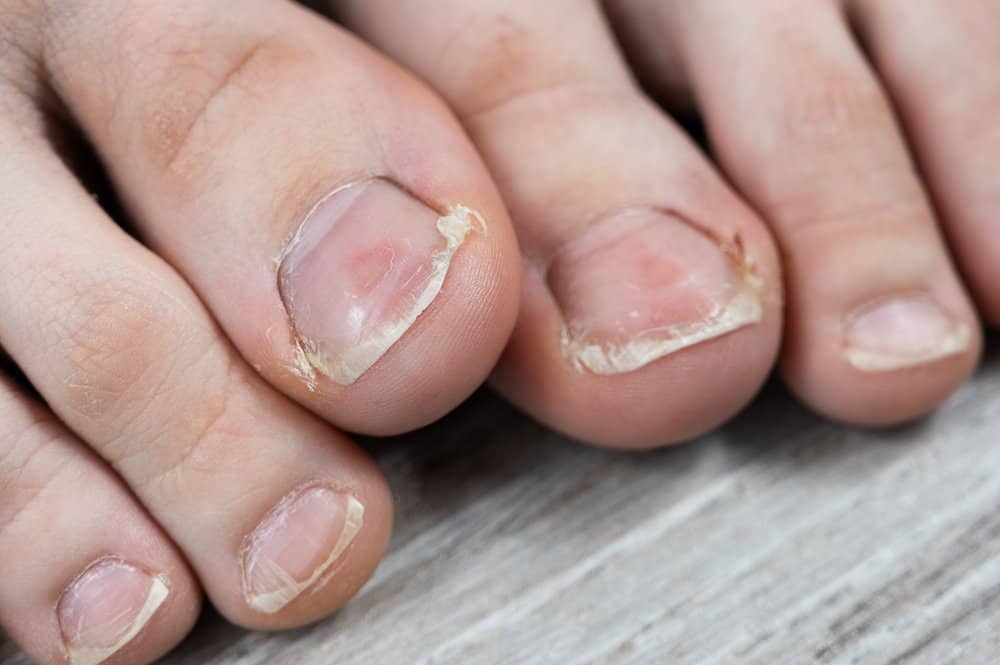

Next, she uses the #999 Nipper (also known as the Long John Nipper) to remove the dead skin between the nail plate and the cuticle. To help remove the skin that's actually stuck to the nail, Geimer uses the #125 Pterygium Remover from Mehaz, which has a contoured handle for easy control. (Glen Cove, N.Y.), recommends using it sparingly and very gently to remove excess tissue and hangnails. If you're using a nipper, Lori Skroski, vice president/sales of Tweezerman Corp. She even goes one step further: "1 actually take one side of the cuticle nipper and very gently scoop it around the cuticle area to remove any remaining dead tissue." "There may still be some tissue hiding underneath the eponychium so I'll use a curette to gently scrape off the non-living tissue that is adhered to the nail plate," says Hartell. Sometimes a cuticle pusher alone will not completely remove excess growth. If you use a file instead of a cuticle pusher to remove excess growth, you may leave behind small pieces because the skin is dry and flaky, adds LaCinda Headings, a nail technician based in Wichita, Kan, "Even though the excess growth is dead skin, it still retains moisture, which causes product to lift." Too coarse a grit or too heavy a hand may also tear and weaken the nail layers. On toenails, the spoon allows you to dig deeper to remove excess growth along the sides," she adds. "I use the spoon to clean out under neath the nail. "The pusher is contoured to the shape of the nail so it: gently lifts the excess cuticle growth and pushes it back," Geimer explains.

The Combo Pusher (one side is a pusher and the other side is a spoon) is her tool of choice. "It takes only seconds to remove excess cuticle growth, which is a very important step when preparing the nails," says Kelly Geimer of Mehaz Worldwide (Los Angeles, Calif.). "After all, the cuticle serves as protection from germs," she adds. But, warns Hiizer, be careful not to push back the cuticle too far because you risk the possibility of infection. If the edge is straight or pointed it won't work as well," she says. The dome shape also makes it easy to get in and around the cuticle area. "I like the rounded edge to push back the cuticles because it won't damage the nail plate when removing excess growth.

Hizer prefers using OPI's PusherPlus, which is a stainless steel cuticle pusher and a nail plate preparation system in one. Next, she uses Creative's metal cuticle pusher to gently push back the cuticle to reveal the non-living tissue underneath that's sticking to the nail plate.

If a client has excessive cuticle growth, Hartell also applies SolarOil, which penetrates quickly and conditions the cuticles even more, she says. Cuticle Revitalizer and Orly's Cuticle Therapy Creme also use a combination of fruit acids and moisturizing agents to treat cuticles. Other companies, such as Poshe (Dallas, Texas) and Orly International (Chatsworth, Calif.), have similar cuticle treatment products. "The AHAs in OPl's Avoplex Exfoliating Cuticle Treatment help exfoliate dead skin cells, while the avocado oil and phospholipid complex help to moisturize and soften cuticles and skin," she explains. Hizer also uses a cuticle treatment on her clients first to let it do some of the work for her. "I squeeze a small amount onto the cuticle and massage it in," she says. First she applies C-Therapy Cuticle Eraser, which contains alpha hydroxy acids (AHAs) to loosen the bond between dead skin cells so they slough away. Hartell uses an arsenal of cuticle-specific products from Creative on her clients. I do this especially during wintertime when clients' cuticles are dry and cracked." "If there's excess growth, I usually soften the cuticles first with heated lotion or oil. "Normal cuticle growth should come off by just pushing back the cuticles with a gentle, circular motion," says Watson.


 0 kommentar(er)
0 kommentar(er)
